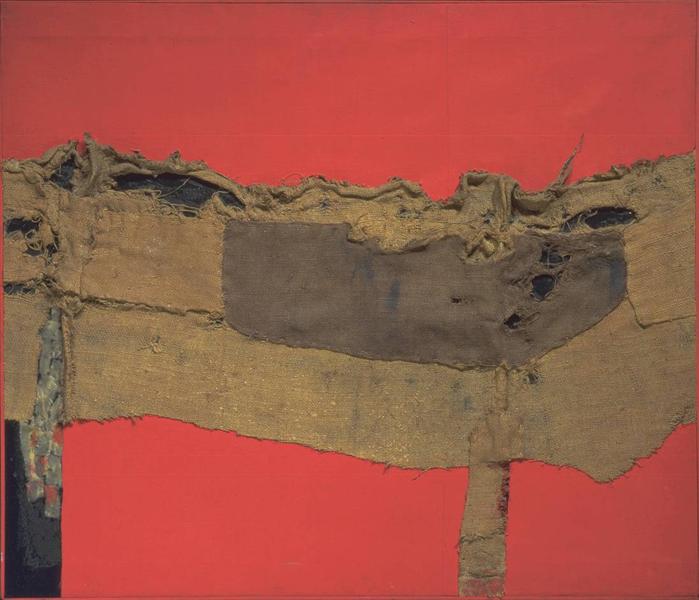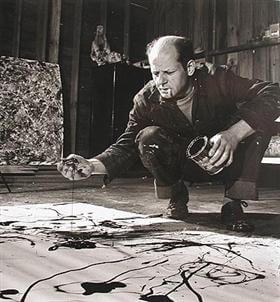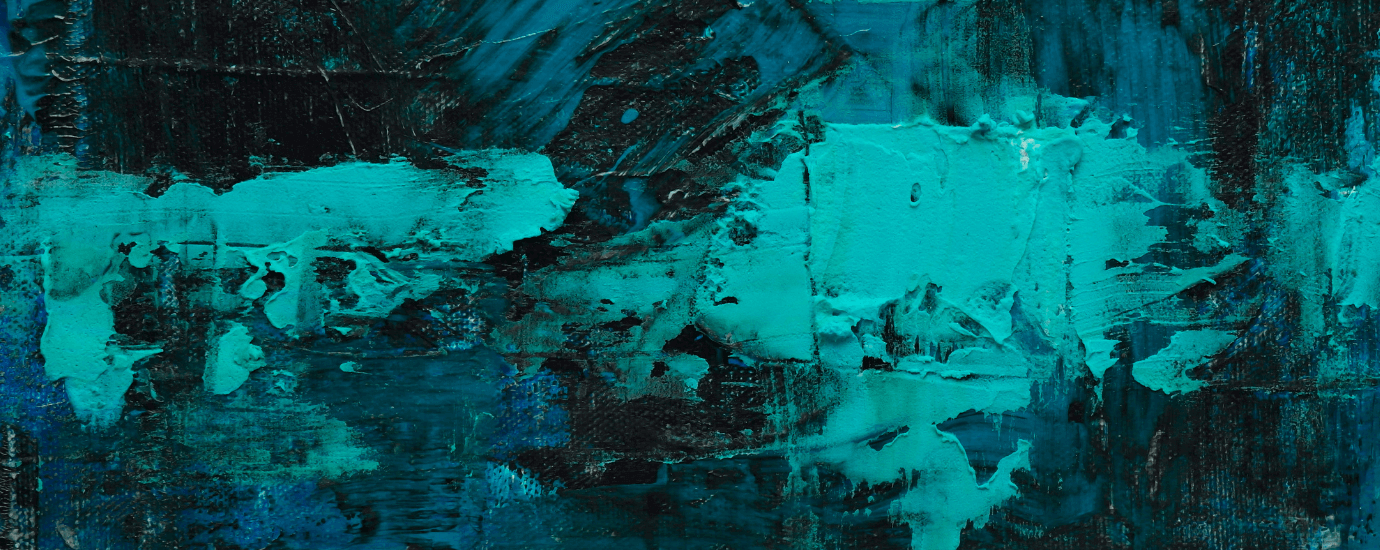A BROAD SPECTRUM OF ABSTRACT PICTORIAL EXPERIENCES
On the still hot and smoking ashes of the Second World War appeared a group of painters from Europe and the United States. Leaders of a very broad spectrum of abstract pictorial experiences, despite the diversity and expressive force that then existed at the time, they unofficially gather under the banner of Informalism Art. The "Informalism Art" formula was given in 1951 by the famous critic of Art Michel Tapié during the exhibition "Vehémences confrontées" held in March of that same year in the gallery Nina Dausset on the theme "Extreme trends of the Non figurative painting".
(Alberto Burri, 'Sacking and Red' 1954)
In this painting, the artist leaves all freedom to the unexpected of the materials and to the randomness of the gesture, thus refuting the mastery, the drawing as well as the traditional conception of painting and its path that transform the idea into a finished work, going through the sketches. With Informalism art, it is a work open to interpretation that the viewer can read and interpret freely. Breaking with the usual artistic clichés, the pictorial adventure takes a new turn, instead of starting from a sense to construct signs; the Informalism artist begins by making signs and then giving them meaning. The movement focuses on the pictorial process that allows the spiritual to express itself freely and immediately.
THE INFORMAL EUROPE
The international context of the time plays an enormous role in the emergence of these new forms of expression. In Europe, for many artists, it is no longer possible to represent reality in a figurative, precise, explicit and realistic way. The eyes are full of memories where images between war, confusion, atrocities, doubts and dark future pass. Experimentation is then a powerful means of engaging for their own truth, and artists develop an abstract or Informalism aesthetic to image their feelings, impressions and expressiveness. Informalism has no clearly defined boundaries, and this notion then derives from several aspects. Thus is born the movement of lyrical abstraction where plastic freedom and the linear projection of colors reign supreme. The "Tachism" but also the Matierism of Antoni Tàpies are also considered as Informalism Art. Free of recognizable forms, it is a Free and experimental Art. Its principal European representatives are Pierre Soulages, Jean Fautrier, Jean Dubuffet, Wols Alberto Burri, Emil Schumacher and Georges Mathieu.
ABSTRACT AMERICAN EXPRESSIONISM
On the other side of the Atlantic, the will is equally powerful to break with the influence of Cubism and Surrealism as well as all its own pictorial principles such as form, tonal harmony, perfect balance, proportions, unitary composition or centralized structuring. Unlike Europe, the new flourishing, social, political and artistic economic conditions give rise to a new way of thinking about painting. Abstract expressionism was born with a whole generation of artists living in New York.
(Jackson Pollock)
As in Europe, this abstract expressionism, which is an Informalism Art, is divided into several branches, the two main ones being Action Painting and Colorfield Painting. The first one is mainly featured by Jackson Pollock, Willem de Kooning or Franz Kline, while the latter is found in the artworks of Mark Rothko, Clyfford Still or Barnett Newman.
HILDE WILMS, IMPRESSION OF FEELINGS
Particularly affected by Informalism art and artists like Antoni Tàpies, Emil Schumacher or Gerhard Richte, the German painter Hilde Wilms describes her work as an expression of her feelings and inner thoughts. Hilde's painting is, above all, a painting of atmosphere. Initially, she likes to be guided by her inspiration. With the forms and the colors, she questions the paper, her favorite medium. Progressively the work takes shape and the motif appears... Hilde's painting is not a work of concept but really of impressions. The artist emerges from herself sensations, images, shapes or colors that she has lived. The result always surprises her and she asks herself about the meaning of certain works. Painting is a real outlet that allows Hilde to finally exteriorize all that she carries in her.
















